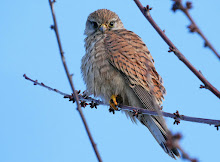Three o’clock on a freezing November afternoon. In a few minutes the sun will sink below the hedge and the garden will be plunged into deep shadow.
There’s something climbing up the trunk of the old crab
apple tree, about fifteen feet from the window. At first it looks like it might
be a field mouse, but it’s a small brown bird with claws like crampons and a
long, slender, curved beak like surgical forceps: a tree creeper.
It’s searching every nook and cranny for insects and there
are plenty of them - the tree has been infested with woolly aphids all summer
and their nymphs are overwintering in bark crevices.
Biological pest control at its best.
Just time for a few quick pictures through the window as the bird climbs through the the last
glimmer of sunlight on the crab apple trunk - and then it vanishes.
Half a minute of
magical birdwatching, from the comfort of a settee.
.jpg)
.jpg)
.jpg)

























